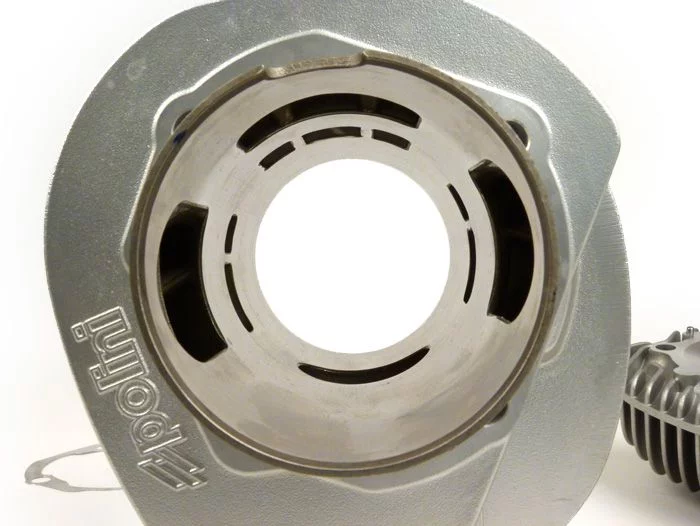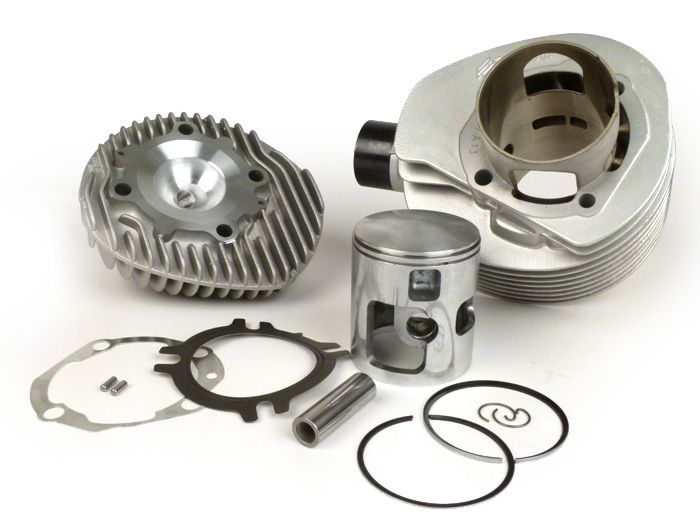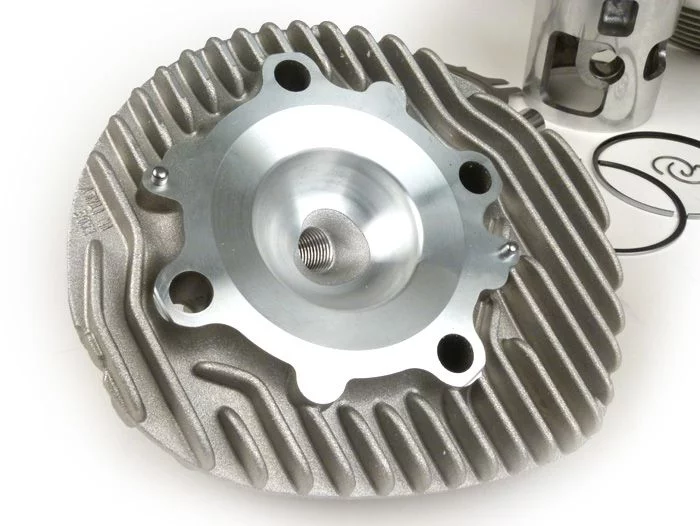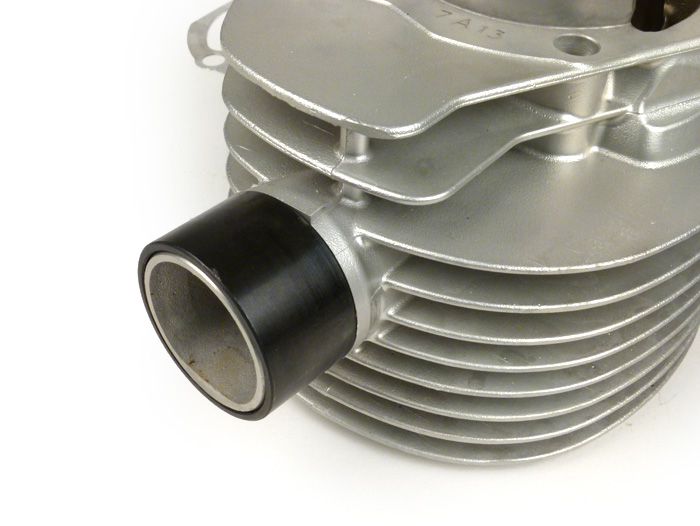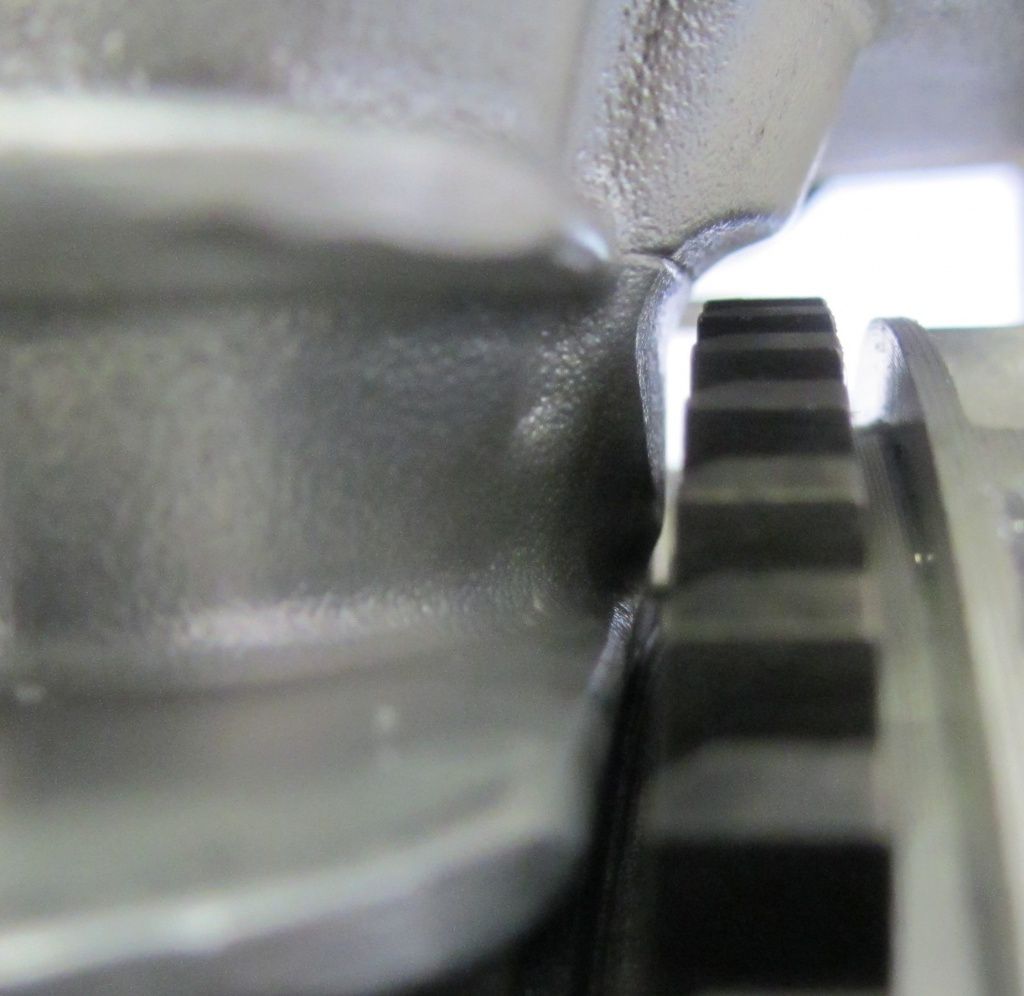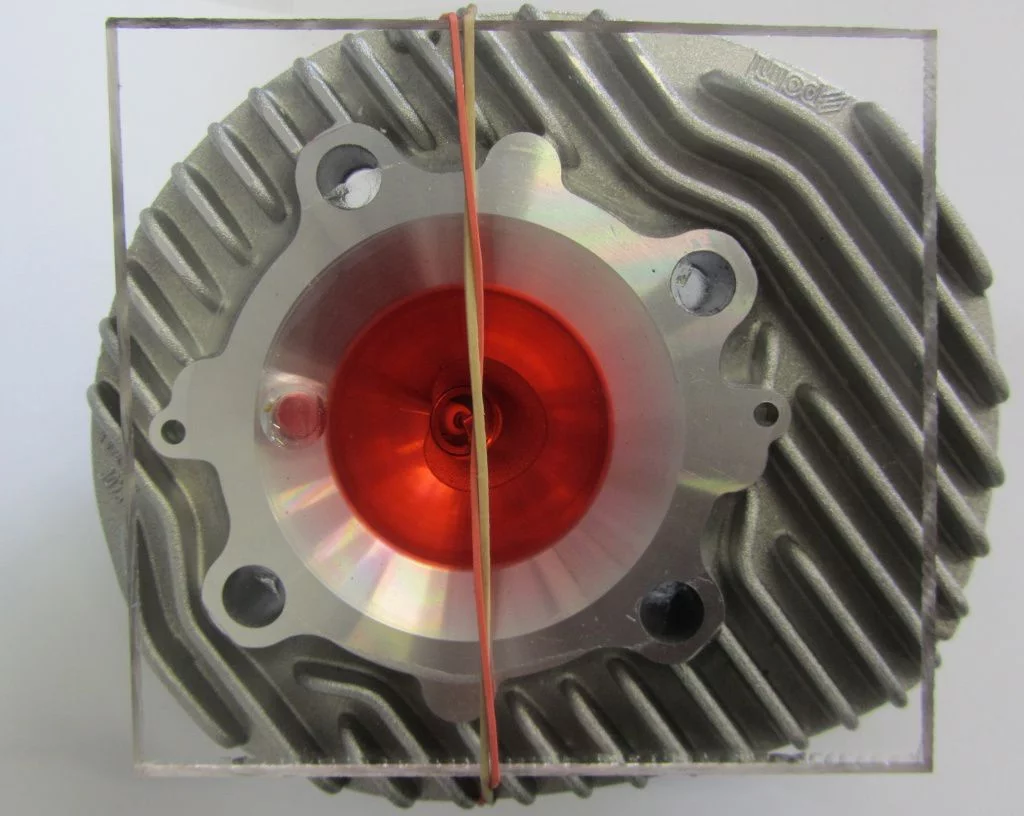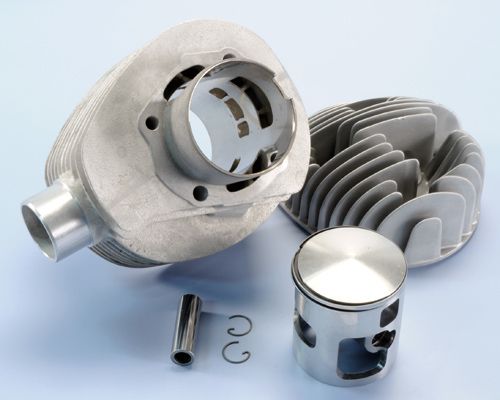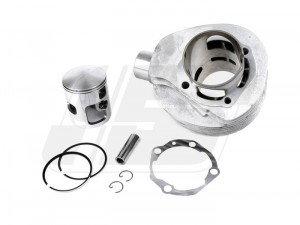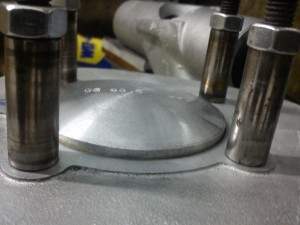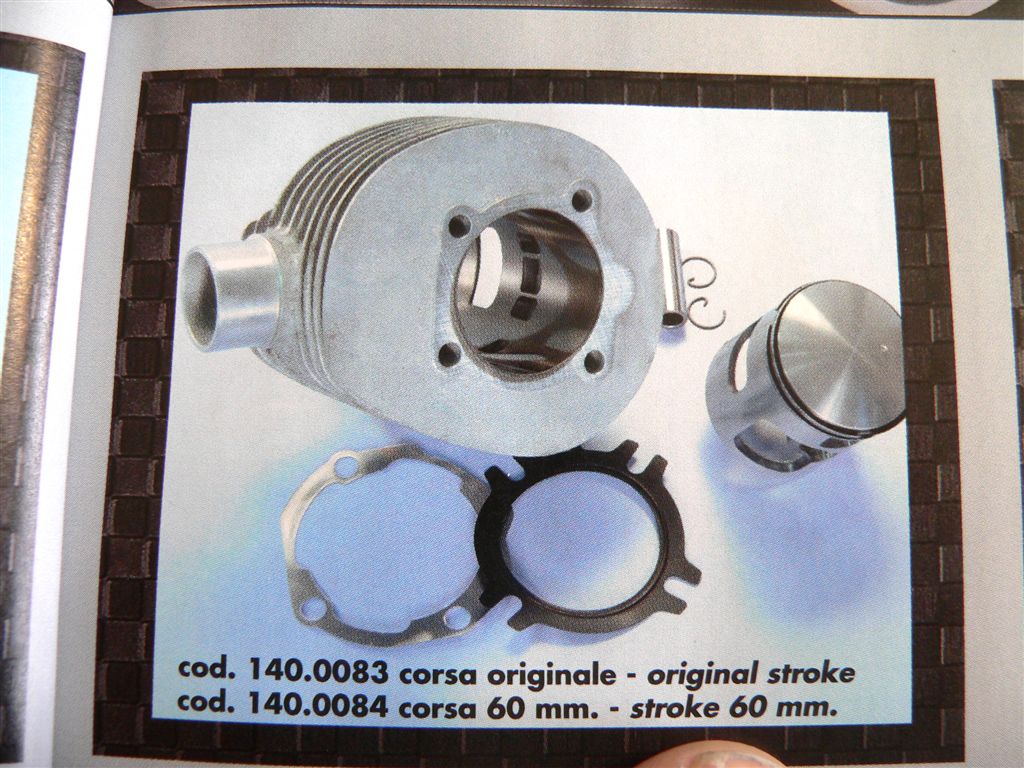From now on is the new one Polini 221cc Vespa cylinder available from us.
What's new?
- suitable for 60mm stroke (long stroke shaft)
- reinforced outlet with steel ring
- massive, centered cylinder head with large cooling surface
- also fits E-start engines
Dimensions and data:
- Cylinder height 99,7mm
- Outlet height 39,2mm
- Overcurrent height 50,2mm
- Support channel height 53mm
- Cylinder base gasket 0,25mm
- Cylinder head gasket 0,25mm
- Outlet chord 36,8mm
- Compression ratio 10,2: 1 (with QK 2mm)
We took a closer look at the Polini 221ccm cylinder for you.
Solid cylinder head
At first glance, it impresses massive cylinder head. Equipped with additional cooling fins on the underside, it ensures sufficient heat dissipation at all times, even with engine concepts that are subject to high thermal loads. The spark plug thread is designed for long threads, i.e. a B9ES or Bosch W3CC for NGK.
Precise centering thanks to centering pins
It also has centering holes together with the cylinder. With the included centering pins, the pinch edge can be set safely and precisely.
Reinforced outlet nozzle
You can find another nice detail on the outlet nozzle.
Here the sensitive aluminum socket is reinforced by a resistant steel ring.
The steel ring effectively protects the sensitive aluminum nozzle from damage by exhaust systems that are fastened with a clamp. Exhaust systems suspended by springs no longer “gnaw” off the exhaust port.
Suitable for engines with an electric starter
A little trick in the truest sense of the word adorns the outside of the right overcurrent duct.
With the 221, Polini offers one of the few cylinders available on the market that can be installed and driven with an electric starter without any changes.
Measurement results
Here are the usual ones Scooter Center - Measurement results:
Height cylinder: 99,7mm
Outlet height (from OK): 39,2mm
Overcurrent duct height (from OK): 50,2mm
Support channel height (from upper edge): 53mm
The piston residue is 2,0mm with the included cylinder base gasket
This results in the following control angles:
Outlet 168 °; Overcurrent 120 °; Support channel 104 °
Compression ratio and combustion chamber volume:
In order to determine the combustion chamber volume and thus the compression ratio, we rented out the cylinder head and determined the volume of the dome of the piston crown.
The combustion chamber volume of the head is 24,9ccm.
The volume of the elevation of the piston crown is 8,1 cm³
With a piston residue of 2mm and the resulting squishy edge (without the enclosed cylinder head gasket 0,25mm), the compression ratio is 10,2: 1
Based on the moderate control angle and the combustion chamber design, together with the Polini crankshaft, we would expect an engine with good running smoothness and a lot of torque in the lower to medium speed range.
We are excited to see when you will put the first real Polini 221ccm on our test bench!
Polini 221cc Vespa cylinder now cheap at Scooter Center Kaufen.

